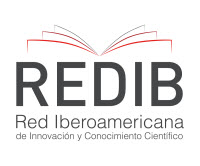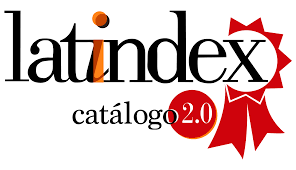
This work is licensed under a Creative Commons Attribution-NonCommercial-ShareAlike 4.0 International License.
Esta obra está bajo licencia internacional https://creativecommons.org/licenses/by-nc-sa/4.0/deed.es
La revista (y sus contenidos) emplean las licencias Creative Commons, específicamente la del tipo CC BY NC SA 4.0, la cual establece que “el beneficiario de la licencia tiene el derecho de copiar, distribuir, exhibir y representar la obra y hacer obras derivadas siempre y cuando reconozca y cite la obra de la forma especificada por el autor o el licenciante”. La licencia del tipo CC BY NC SA 4.0 contempla tres categorías,
- Atribución.
- No Comercialización de la obra.
- Compartir igual
Los lectores son libres de:
- Compartir — copiar y redistribuir el material en cualquier medio o formato
- Adaptar — remezclar, transformar y construir a partir del materialLa licenciante no puede revocar estas libertades en tanto usted siga los términos de la licencia
- Siempre y cuando se respeten y contemplen la atribución de autoría y la no comercialización del material.
Abstract
During the 1970s, Thomas L. Saaty developed a mathematical methodology that allows reaching a decision-making process, called the analytical hierarchy process (AHP), which takes into consideration the most important alternatives that must be handled to answer or address a problem. It also considers all the attributes or logical criteria that allow evaluating whether the decision to be made is the most efficient and correct. This applied research addresses the AHP methodology to recommend to a regional airline the options that they should consider implementing as benefits that will make up their value proposition for their corporate customers, in order to increase customer satisfaction and reverse the values of uneven distribution that it presents. at the moment. The study also addresses concepts based on strategy and competitive advantage
Keywords:
References
Evans, G. W. (2017). Multiple criteria decision analysis for industrial engineering: methodology and applications. Boca Raton, FL: CRC Press, Taylor & Francis Group.
Gamble, J. E., Thompson, A. A., & Peteraf, M. A. (2019). Essentials of strategic management: the quest for competitive advantage. Dubuque: McGraw-Hill Education.
Marr, B. (2012). Key performance indicators: the 75 measures every manager needs to know. Harlow, England: Pearson Education.
Saaty, T. L. (1980). The analytic hierarchy processes. Maidenhead: McGraw-H

















